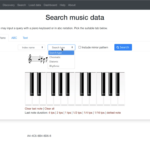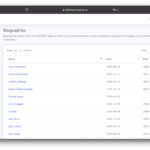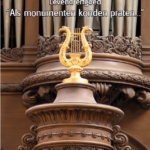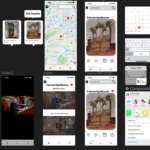Interlink
Integrating digital music libraries
In order to answer research questions, musical heritage scholars need to combine diverse datasets ranging from music scores, audiovisual material to metadata. They need to identify similar entities and concepts implicitly present in the data, across different collections in different institutions.
This process is currently mainly conducted manually and in isolation, with the diverse results being rarely connected and shared in a way to be easily reused. To overcome the burden of this manual task, this pilot will focus on revealing and make compatible the entities and concepts hidden in digital music libraries and audiovisual archives.
To further promote the level of linkage among heterogenous collections, state-of-the-art methods for computational music analysis will be employed to establish connections between musical objects, thereby opening new paths for the investigation of music-related data.
European musical heritage consists of a large variety of archival objects such as music scores represented in diverse formats, audio recordings, live performances, videos, physical objects, and so forth. These are typically organised in collections with a national, regional, or thematic focus, each described using their own set of metadata based on specific ontologies and vocabularies. As a result, many of these collections exist in isolation of each other, which in turn diminishes the impact and the potential reuse of such unique contributions across several domains and use cases.
Indeed, for any potential user of these collections, whether this is a curator, researcher, instructor or someone from the creative industries, the actual relations between such datasets are highly relevant. Compositions, performances, audio and video recordings, lyrics, melody lines: these all intersect across borders both national and institutional.
The Interlink pilot aims to provide tools and services that facilitate researchers and curators to establish such links and, by doing so, enabling a story-telling space across different sources, time and space. Users will thus be able to navigate music-related collections as if their elements all belong to the same information pool, and explore their content in a way that promotes their interoperability despite their original focus. In addition, a dense linking level among the comparable musical items will be established based on the similarities that can be inferred from both the musical surface (tonal and rhythmic complexity, structural similarities, etc.) and the descriptional level (e.g., metadata). By creating a dense level of linkage among musical items, the pilot aims at increasing the degree of connection among the different collections, thereby unveiling new paths in the resulting knowledge graphs.
To make this possible, the pilot will exploit various components of the Polifonia ecosystem. A registry for datasets can be queried by users to establish which collections are most relevant for their use case. Various ontologies, specific to a certain type of collection, can also be used to increase interoperability when needed. Alignments between vocabularies will define new links between the various collections. Furthermore, to create the dense linking among musical items, state-of-the-art methods for computational analysis of music will be employed and complemented with algorithms specifically designed for the Polifonia ecosystem.
Pilot leader:
Jacopo de Berardinis





